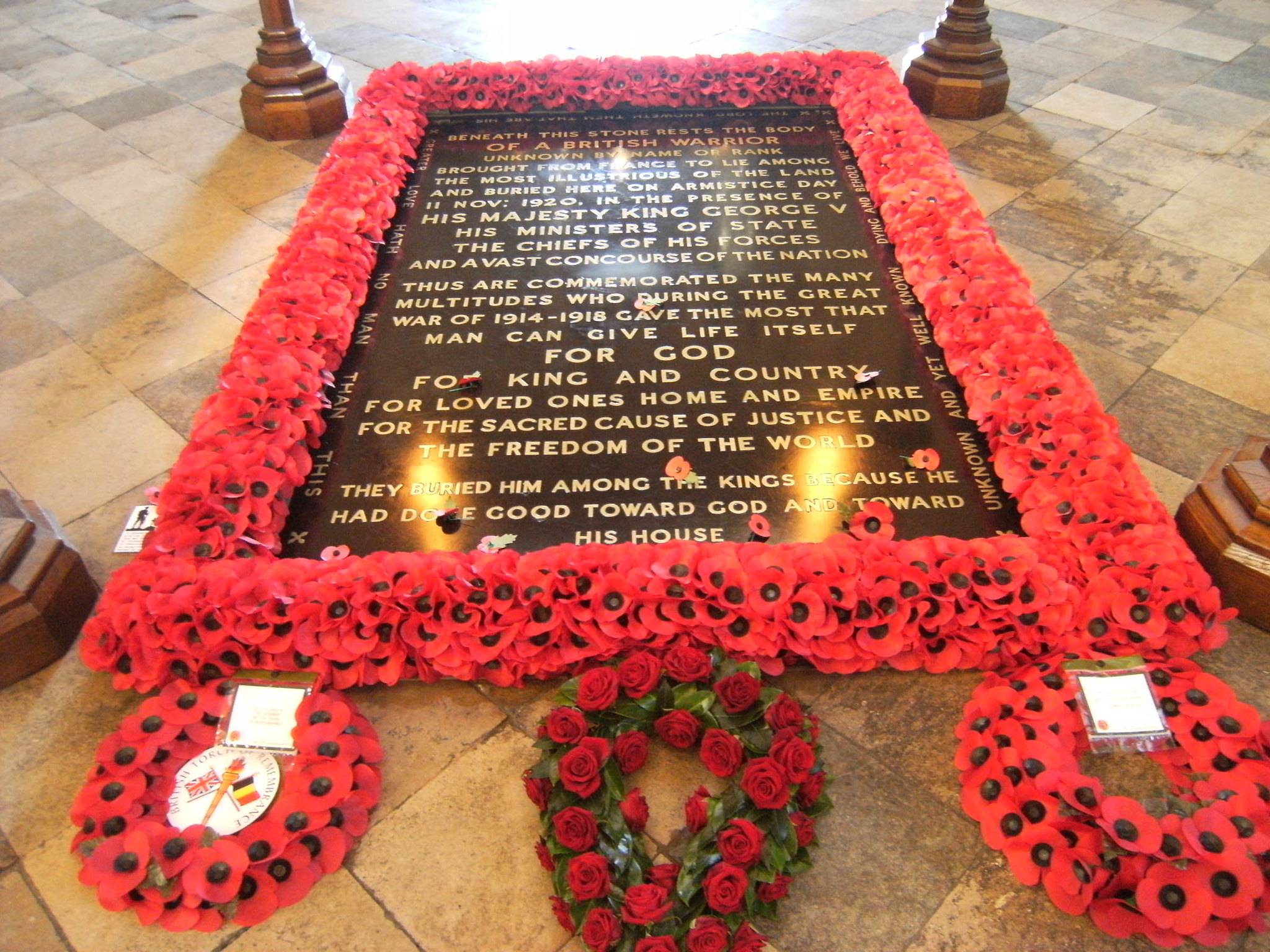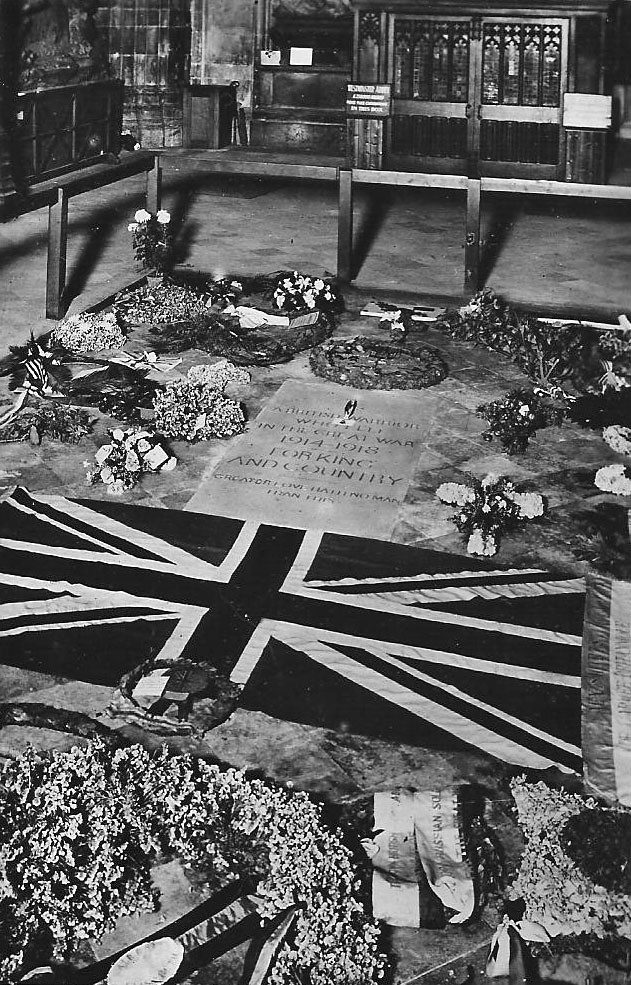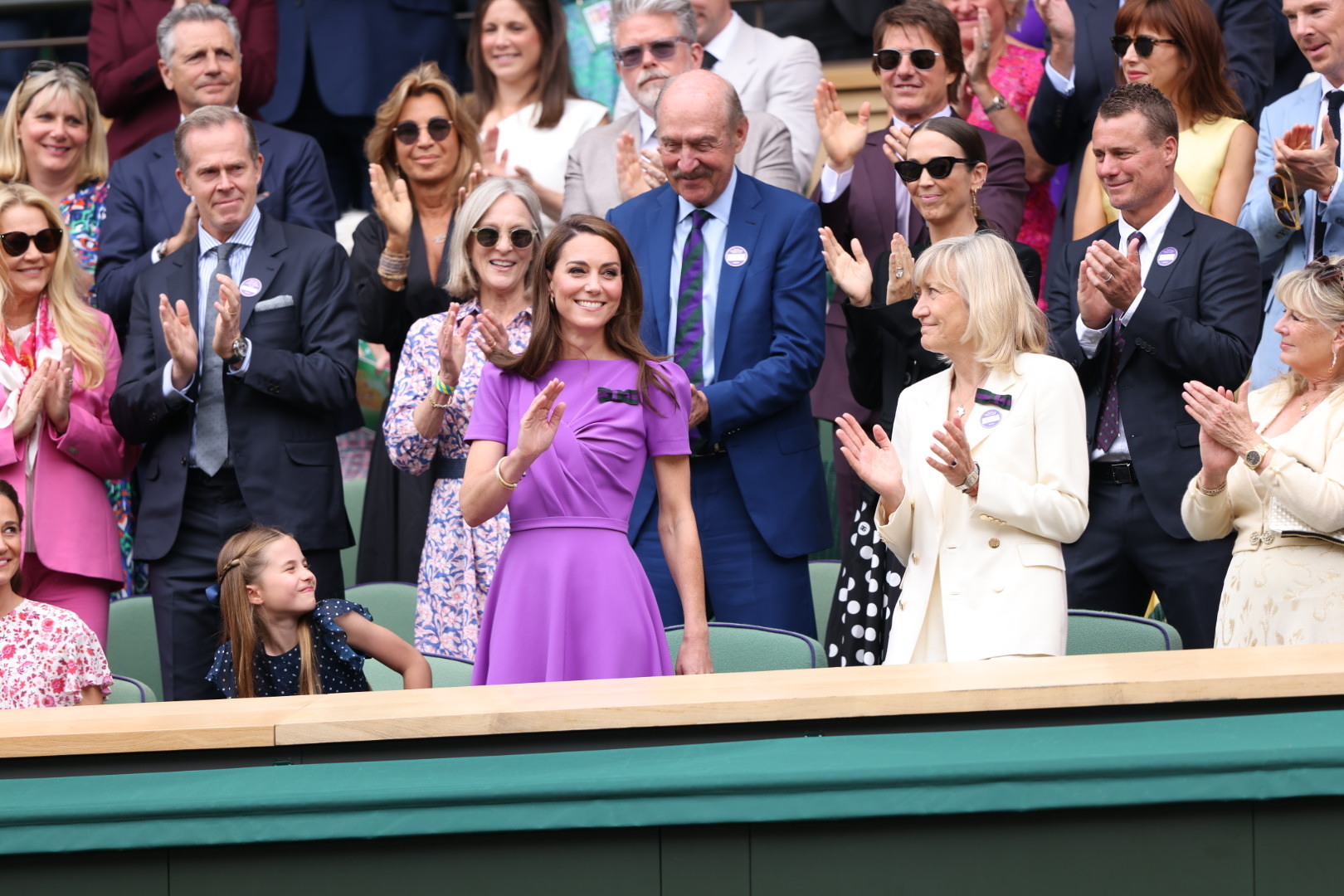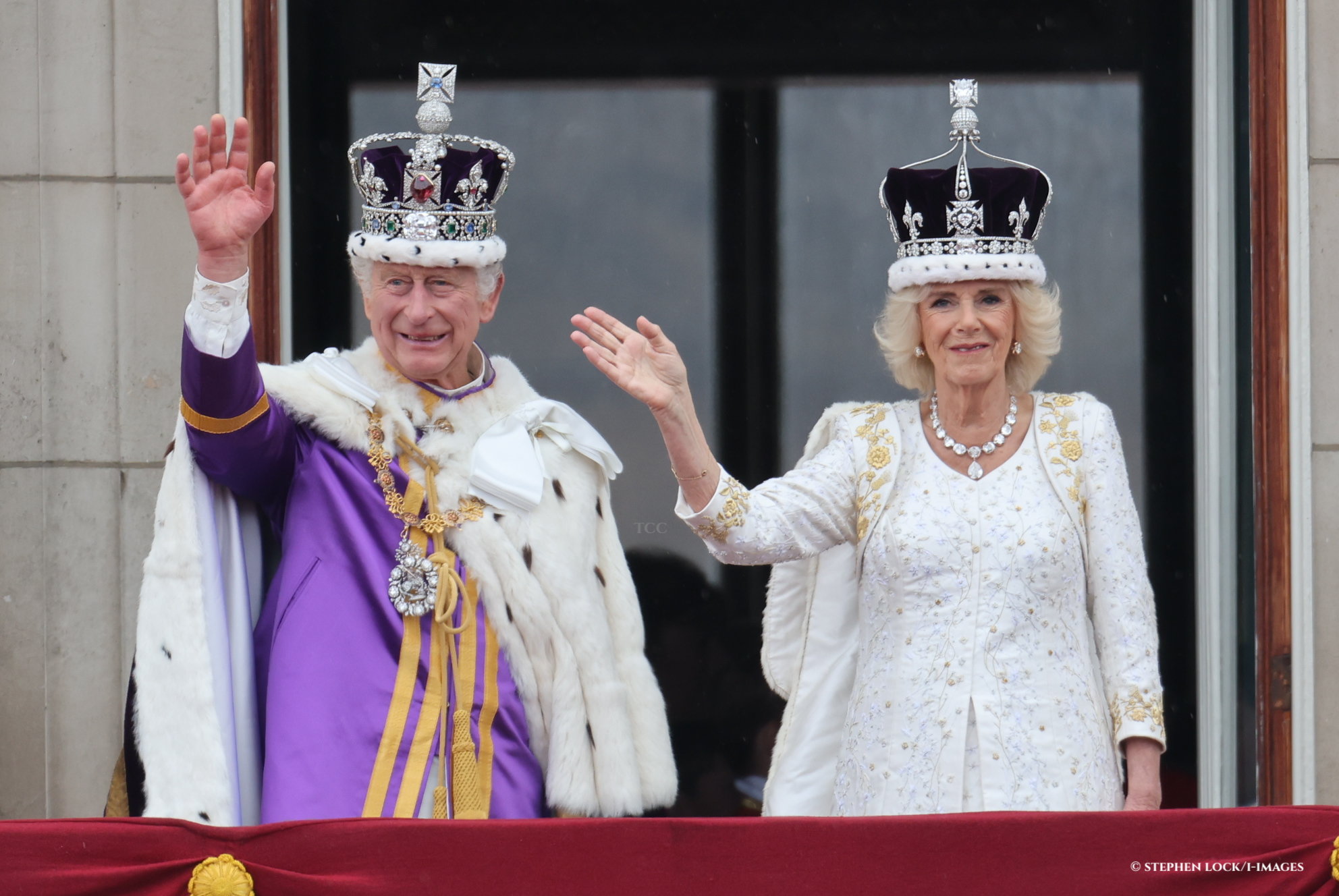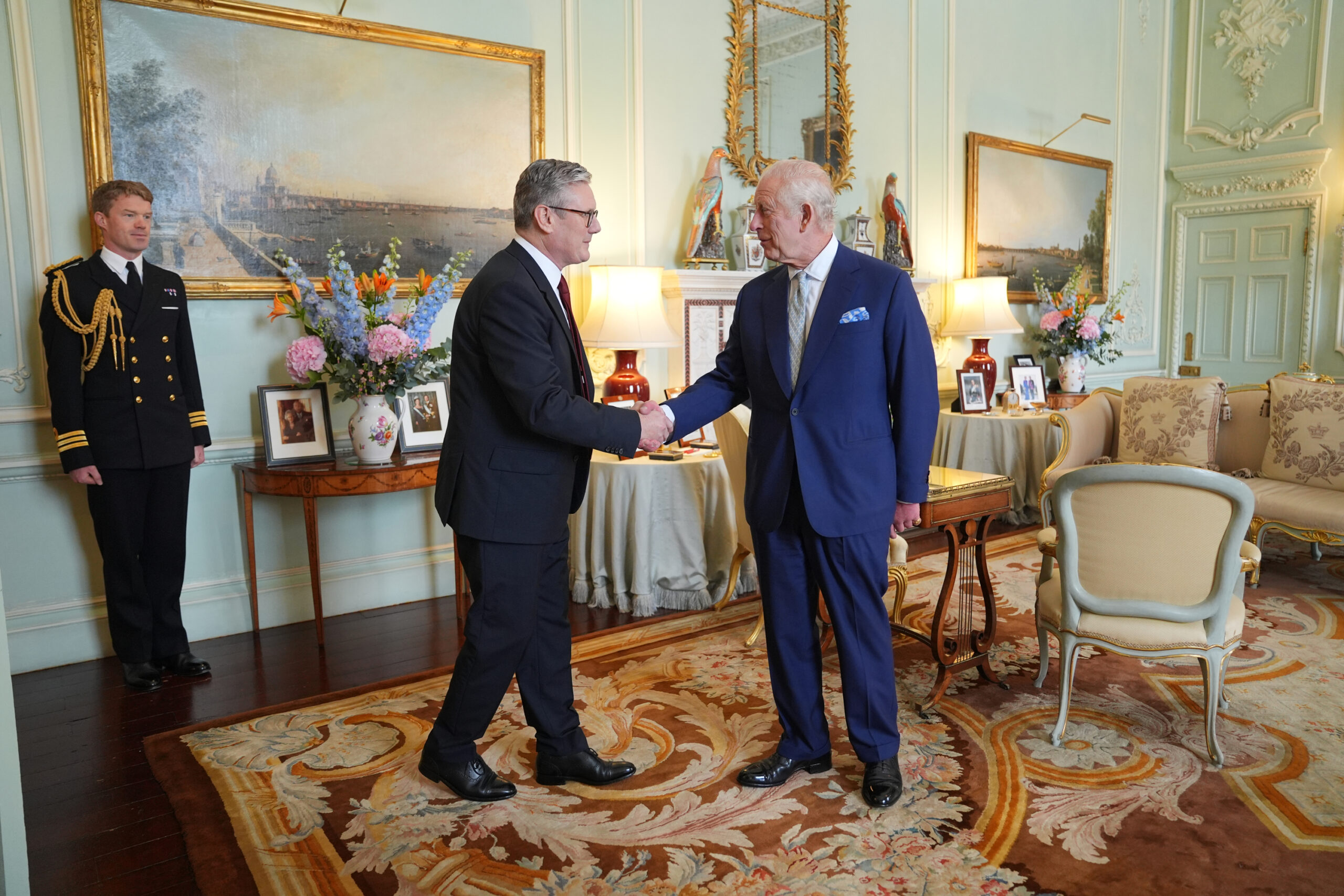Today marks Remembrance Day in the UK, when a two-minutes’ silence is held to honour the sacrifice of those service personnel of the First and Second World Wars, who gave their lives.
The Tomb of the Unknown Warrior is part of the tradition of remembrance, but what is it and what is the tomb’s significance?
The Tomb of the Unknown Warrior is located just a few metres in the entrance of Westminster Abbey. It contains the body of an unidentified British soldier from the First World War.
How the Warrior was chosen
The body was brought from France, where the fighting mostly took place, and he was buried in a state funeral at the Abbey on 11th November 1920.
It was Reverend David Railton’s suggestion to mark the fallen in this way; serving as an army chaplain on the Western Front, Railton had seen a grave in a garden at Armentières, marked by a rough cross. The cross was inscribed in pencil: ‘An Unknown British Soldier’.
Writing to the Dean of Westminster in 1920, he suggested that an unidentified British soldier from the battlefields should be buried ceremoniously in Westminster Abbey, ‘amongst the kings’ to represent the many hundreds of thousands of lives lost in the cause of the war, not only from the UK but also the wider British Empire. It would also to represent the men lost, who could not be put to rest by their families.
Both the Dean and the Prime Minister, David Lloyd George, supported the idea; the Prime Minister later wrote: ‘The Cenotaph is the token of our mourning as a nation; the Grave of the Unknown Warrior is the token of our mourning as individuals.’
Four bodies were exhumed from the French soil, from four different battlefields; draped in British flags in the chapel at Arras, one was chosen at random by a senior army officer, Brigadier L.J. Wyatt, and the other three men were interred at St Pol; the chosen remains were placed into an oak casket, made using trees from Hampton Court Palace. A 16th century sword from the Royal Collection was chosen by King George V personally, which was affixed to the top. An iron shield sat above this with the inscription ‘A British Warrior who fell in the Great War 1914–1918 for King and Country’. George V had been Monarch throughout the conflict.
HMS Verdun transported the coffin from France, after it had received a military send off.
The internment of the Unknown Warrior
In London, arriving at Victoria station, the coffin rested overnight. It was transported to the Abbey on a gun carriage the morning of 11th November, with full state funeral honours. The ceremonial route took the coffin past Hyde Park Corner, and past the new Cenotaph along Whitehall, to Westminster Abbey.
Embed from Getty Images
Embed from Getty Images
The unveiling of the Cenotaph was part of the funeral of the Unknown Warrior. When the procession reached Whitehall, the King laid a wreath of red roses atop the coffin, with a card that read: ‘In proud memory of those Warriors who died unknown in the Great War. Unknown, and yet well-known; as dying, and behold they live. George R.I. November 11th 1920.’ He and his sons, Edward, Albert and George, followed in the procession to Westminster Abbey on foot.
The casket was then borne into the West Nave of the Abbey, flanked by a guard of honour of 100 Victoria Cross recipients. 100 women who had lost their husband and all their sons in the war were invited as guests of honour for the sombre occasion, amongst 1000 mourners.
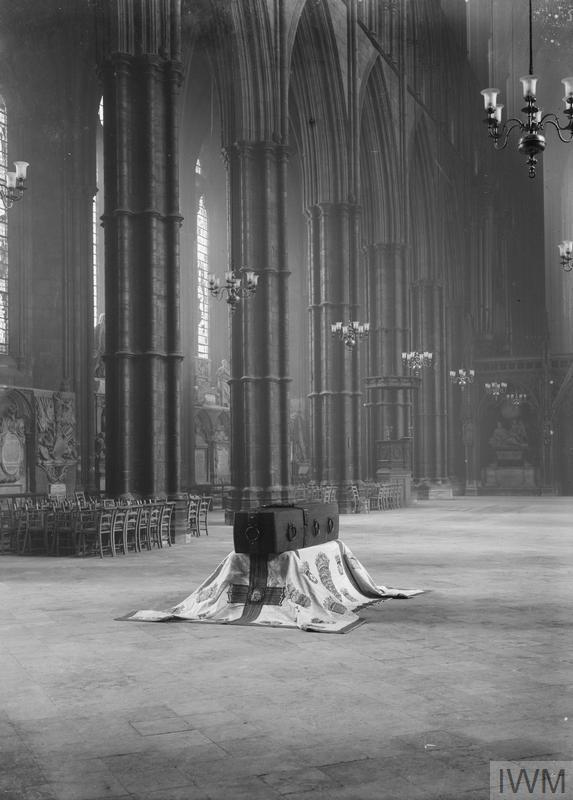
THE UNKNOWN WARRIOR AT WESTMINSTER ABBEY, NOVEMBER 1920 (Q 31515) The coffin of the ‘Unknown Warrior’ in Westminster Abbey, London, 7 November 1920. Copyright: © IWM
Queen Alexandra joined the service, as did the Queens of Spain and Norway, the Duke of Connaught, Prime Ministers Lloyd George and H H Asquith, and Sir Douglas Dawson.
The coffin was buried with soil brought from each of the main WWI battlefields, 100 sandbags in total.
Servicemen from the armed forces stood guard as tens of thousands of mourners filed silently past after the service.
George V wrote of the day: ‘I with the three boys [his sons] received the body at the Cenotaph, which had been brought from France yesterday; the funeral procession came from Victoria station.
‘At 11.0. I unveiled the Cenotaph & then followed two minutes silence throughout the whole Empire. The whole ceremony was most moving & impressive.
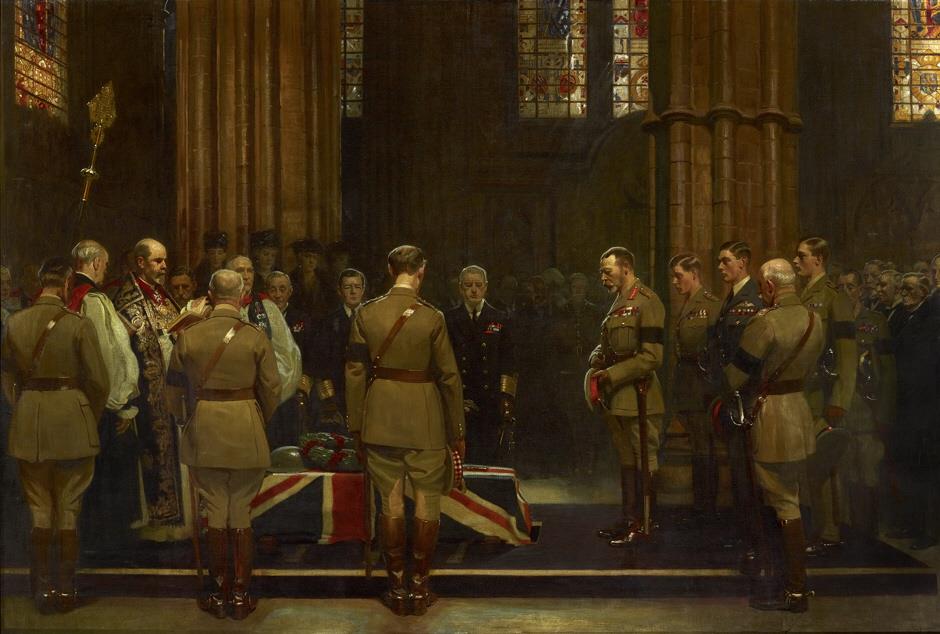
George V, with his sons behind him, at the burial of the Unknown Warrior in 1920; painting by
Frank O. Salisbury (Wikimedia commons)
‘I then followed the gun carriage on foot to Westminster Abbey where the burial took place, the grave was filled in with soil brought from France. The Service was beautiful & conducted by the Dean.’
Exactly one year later, in 1921 the black marble slab we see today was unveiled at a special service. The brass engraved text was created from melted-down ammunition.
The Tomb at the Abbey
A black marble slab marks this location out to visitors. It is the only tomb upon which guests are not allowed to walk in the church. The inscription reads:
Beneath this stone rests the body
Of a British warrior
Unknown by name or rank
Brought from France to lie among
The most illustrious of the land
And buried here on Armistice Day
11 Nov: 1920, in the presence of
His Majesty King George V
His Ministers of State
The Chiefs of his forces
And a vast concourse of the nation
Thus are commemorated the many
Multitudes who during the Great
War of 1914 – 1918 gave the most that
Man can give life itself
For God
For King and country
For loved ones home and empire
For the sacred cause of justice and
The freedom of the world
They buried him among the kings because he
Had done good toward God and toward
His house
Four further inscriptions from the Bible frame the slab:
The Lord knoweth them that are his (2 Timothy 2:19)
Unknown and yet well known, dying and behold we live (2 Corinthians 6:9)
Greater love hath no man than this (John 15:13)
In Christ shall all be made alive (1 Corinthians 15:22)
In 2020, the late Queen attended a private service to mark the centenary of the warrior’s burial, which took place in the presence of her grandparents, George V and Queen Mary. She laid a replica of her bridal bouquet on the grave and a lone piper played a lament.

The Queen wears a face mask at a ceremony to mark the centenary of the burial of the Unknown Warrior at Westminster Abbey. Picture by i-Images / Pool
Royal brides and their bouquets
A tradition was born in 1923, when the soon-to-be Duchess of York entered the Abbey for her nuptials. Elizabeth Bowes Lyon had lost her brother, Fergus, during the First World War, at the Battle of Loos. She spontaneously placed her bouquet upon the marble slab before walking down the aisle.
Since then, all titled royal brides have requested their flowers be placed on the tomb as a mark of respect to the war dead, including Queen Elizabeth II in 1947, The Princess of Wales in 2011, and The Duchess of Sussex and Princess Eugenie, both in 2018.
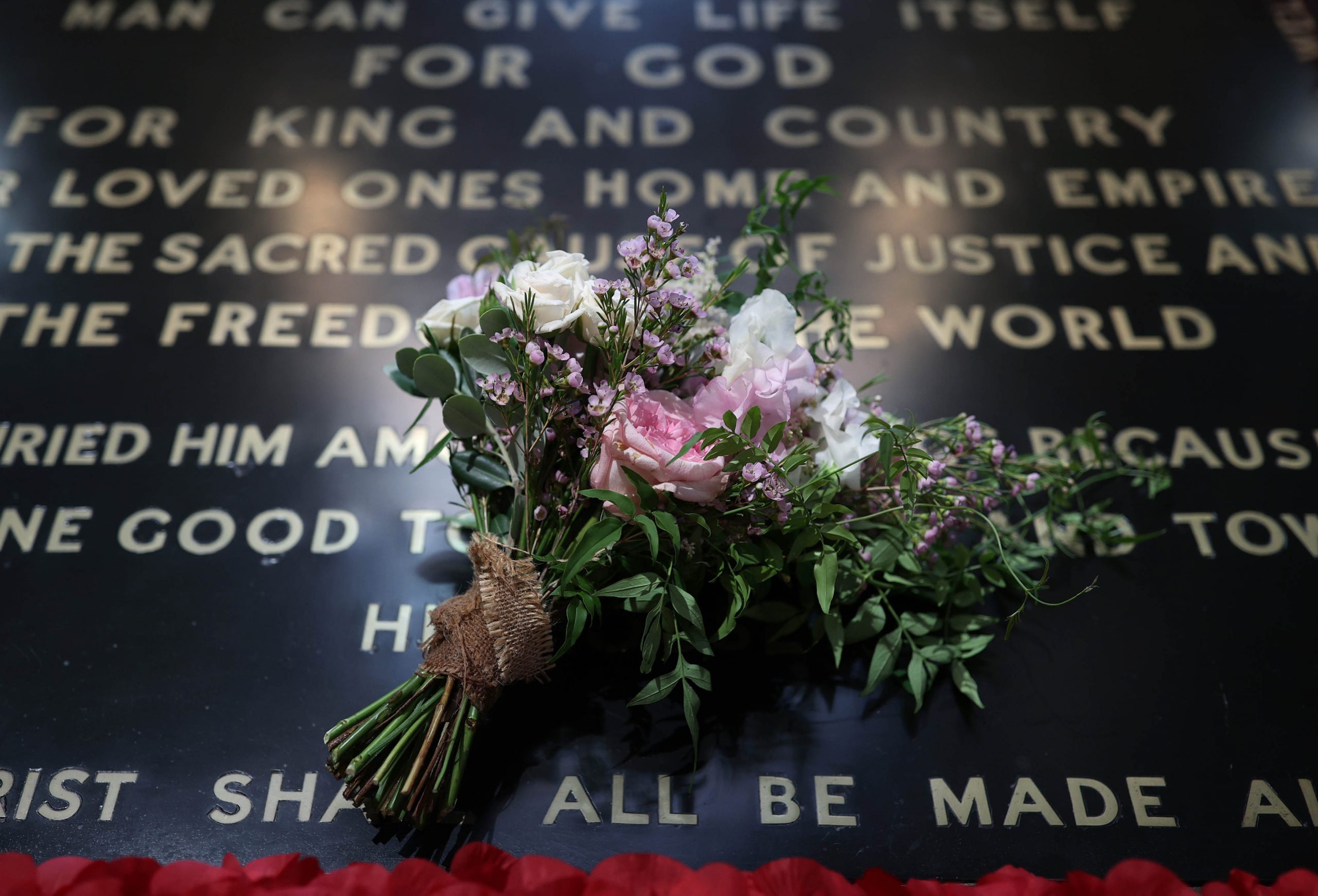
Princess Beatrice’s wedding bouquet in Westminster Abbey in London which, like those of other Royal brides, is traditionally placed on the Tomb of the Unknown Warrior.
The Tomb of the Unknown Warrior regularly forms part of state visits, where foreign Heads of State are able to pay their respects and lay a wreath.
